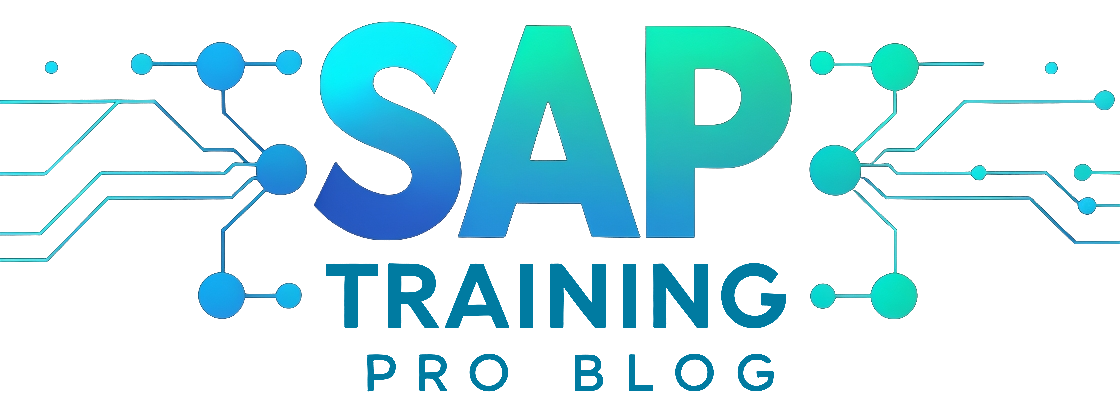SAP Modules integration: Achieving Seamless Integration with SAP Modules

SAP Modules integration is a crucial aspect of achieving a seamless business process and improved efficiency. In today’s fast-paced business environment, organizations rely on various SAP modules to handle different aspects of their operations. These modules, such as SAP Finance, SAP Sales and Distribution, and SAP Human Resources, have specific functions and features that cater to the diverse needs of different departments within an organization.
Table Of Content
Integrating these SAP modules is essential to ensure smooth data flow and effective collaboration between departments. When different modules are integrated, data can be seamlessly shared and accessed in real-time, leading to enhanced visibility and better decision-making. This integration eliminates the need for manual data entry and reduces the risk of errors, as information is automatically synchronized across departments.
Furthermore, integrating SAP modules promotes collaboration and communication between teams, as information can be easily shared and accessed by authorized personnel. This facilitates efficient teamwork and improves overall productivity. By integrating SAP modules, organizations can streamline their business processes, improve data visibility, and achieve a seamless flow of information, ultimately leading to enhanced efficiency and success.
Understanding SAP Modules
Understanding SAP Modules
When it comes to managing complex business processes, SAP modules play a crucial role in ensuring smooth operations and improved efficiency. SAP, which stands for Systems, Applications, and Products, offers a wide range of modules that cater to different aspects of an organization’s business processes.
Each SAP module serves a specific function, addressing various departments and functions within an organization. Some of the commonly used SAP modules include:
- SAP Sales and Distribution (SD): This module focuses on managing sales, distribution, and customer service processes.
- SAP Human Capital Management (HCM): HCM module handles human resource management, including employee recruitment, training, and payroll.
- SAP Financial Accounting (FI): FI module deals with financial transactions, general ledger, and financial reporting.
- SAP Materials Management (MM): MM module is responsible for managing procurement, inventory, and warehouse processes.
- SAP Production Planning (PP): PP module handles production planning, scheduling, and control.
- SAP Quality Management (QM): QM module focuses on quality control and assurance in manufacturing processes.
By understanding the various SAP modules and their specific functions, organizations can effectively align their business processes with the appropriate modules, ensuring seamless integration and efficient operations.
Benefits of Integration
Integration of SAP modules offers numerous benefits to organizations, enabling them to achieve a streamlined business process and improved efficiency. By seamlessly connecting different modules, organizations can enhance their data flow, decision-making capabilities, and collaboration among teams and departments.
One of the key advantages of integrating SAP modules is the streamlined data flow it brings. With integrated modules, organizations can ensure real-time data visibility across different departments, enabling better insights and informed decision-making. This eliminates the need for manual data entry and reduces the risk of errors, leading to more accurate and reliable information.
Furthermore, SAP module integration helps optimize overall business processes by eliminating redundant tasks and automating workflows. This not only saves time and resources but also improves the overall efficiency of the organization. By standardizing processes and ensuring data consistency, organizations can achieve higher productivity and better operational performance.
Another significant benefit of integrating SAP modules is enhanced collaboration. With integrated modules, teams and departments can seamlessly communicate and share information, leading to improved collaboration and teamwork. This facilitates faster decision-making, better problem-solving, and increased efficiency in project management.
In conclusion, integrating SAP modules offers organizations a wide range of benefits, including streamlined data flow, improved decision-making, and enhanced collaboration. By harnessing the power of integration, organizations can optimize their business processes, achieve greater efficiency, and stay ahead in today’s competitive market.
Enhanced Data Visibility
Enhanced Data Visibility
Integrating SAP modules within an organization’s business processes can have a profound impact on data visibility. By seamlessly connecting different departments, real-time data visibility is achieved, allowing for better insights and informed decision-making.
Imagine a scenario where each department within an organization operates in isolation, with their own set of data and information. This fragmented approach can lead to inefficiencies, duplicated efforts, and a lack of clarity when it comes to making critical decisions. However, by integrating SAP modules, data from various departments can be consolidated and shared in real-time.
This integration enables a holistic view of the organization’s data, providing a comprehensive understanding of its operations. Managers and decision-makers can access up-to-date information, allowing them to identify trends, patterns, and potential bottlenecks. With enhanced data visibility, organizations can make well-informed decisions, optimize processes, and respond promptly to changing market dynamics.
Furthermore, real-time data visibility fosters collaboration and encourages cross-departmental communication. With all teams working with the same data, information can be easily shared, and insights can be gained collectively. This collaborative environment leads to improved efficiency, as teams can align their efforts and work towards common goals.
In conclusion, integrating SAP modules offers enhanced data visibility across different departments, empowering organizations with the information they need to make informed decisions. By breaking down data silos and fostering collaboration, organizations can optimize their business processes and stay ahead in today’s competitive landscape.
Streamlined Business Processes
Streamlined Business Processes
When it comes to running a successful business, efficiency is key. SAP module integration plays a crucial role in streamlining business processes, enabling organizations to eliminate redundant tasks, reduce manual errors, and optimize overall operations.
By integrating different SAP modules, businesses can automate repetitive tasks, such as data entry and reporting, saving valuable time and resources. This not only minimizes the risk of human error but also allows employees to focus on more strategic and value-added activities.
Furthermore, SAP module integration ensures seamless data flow between different departments, eliminating the need for manual data transfer and reducing the chances of data inconsistencies. This leads to enhanced accuracy and reliability of information, enabling better decision-making across the organization.
Overall, by streamlining business processes through SAP module integration, organizations can achieve higher operational efficiency, improve productivity, and drive growth.
Improved Collaboration
Integrating SAP modules plays a crucial role in fostering seamless communication and collaboration between different teams and departments within an organization. By breaking down silos and enabling the sharing of information, SAP module integration facilitates a more cohesive and efficient working environment.
With integrated SAP modules, teams can easily access and exchange data in real-time, eliminating the need for manual data entry or reliance on outdated information. This leads to improved collaboration and faster decision-making processes, as teams can work together seamlessly towards common goals.
Moreover, integrating SAP modules allows for centralized communication channels, where teams can share updates, documents, and insights effortlessly. This not only enhances collaboration but also promotes knowledge sharing and cross-functional understanding.
By harnessing the power of integrated SAP modules, organizations can break down communication barriers, improve efficiency, and ultimately achieve better results through enhanced collaboration.
Integration Challenges and Solutions
Integration of SAP modules can be a complex process, often accompanied by several challenges. It is crucial to identify these challenges and implement effective strategies to ensure a smooth integration. Here are some common challenges faced during SAP module integration and their solutions:
- Lack of Compatibility: Different SAP modules may have varying versions or configurations, leading to compatibility issues. To overcome this challenge, it is important to ensure that all modules are updated to the latest versions and their configurations are aligned.
- Data Inconsistency: Integrating SAP modules may result in data inconsistencies, such as duplicate or incomplete records. To address this challenge, data mapping and standardization should be implemented to ensure consistent and accurate data flow between modules.
- Technical Complexity: SAP module integration involves complex technical processes, which may require expertise and experience. Engaging skilled professionals and providing adequate training can help overcome this challenge.
- Change Management: Integrating SAP modules may require changes in existing business processes and workflows. Effective change management strategies, such as proper communication, training, and stakeholder involvement, can help mitigate resistance and ensure a smooth transition.
By understanding and addressing these challenges, organizations can successfully integrate SAP modules and unlock the full potential of their business processes.
Best Practices for SAP Module Integration
When it comes to integrating SAP modules, following best practices is crucial to ensure a successful integration process. Proper planning, data mapping, and testing are some of the key practices that organizations should focus on to achieve seamless integration.
1. Thorough Planning and Analysis: Before initiating SAP module integration, it is important to thoroughly plan and analyze the requirements of the organization. This includes understanding the specific needs of different departments and identifying potential challenges that may arise during the integration process. By conducting a detailed analysis, organizations can ensure a smooth transition and minimize disruptions to the business.
2. Data Mapping and Standardization: Data mapping involves defining the relationships and connections between different data elements across integrated SAP modules. It is essential to establish a standardized approach to data mapping to ensure consistent and accurate data flow between modules. This includes defining data formats, naming conventions, and data validation rules. By standardizing data mapping, organizations can avoid data inconsistencies and improve the overall integrity of their data.
3. Testing and Validation: Comprehensive testing and validation are critical steps in the integration process. This involves conducting thorough tests to identify any issues or discrepancies that may occur during the integration. By validating the integration and resolving any issues early on, organizations can minimize the risk of errors and ensure a smooth functioning of the integrated SAP modules.
By following these best practices, organizations can achieve successful integration of SAP modules, leading to improved efficiency, streamlined processes, and enhanced collaboration.
Thorough Planning and Analysis
Thorough planning and analysis are crucial steps to ensure a successful and smooth transition when integrating SAP modules. It is essential to have a clear understanding of the organization’s business processes and requirements before initiating the integration process.
During the planning phase, it is important to identify the specific goals and objectives of integrating SAP modules. This includes determining the modules that need to be integrated, the data that needs to be shared between them, and the desired outcomes of the integration. By conducting a thorough analysis of the existing systems and processes, potential challenges and bottlenecks can be identified early on, allowing for effective mitigation strategies to be put in place.
Additionally, a comprehensive analysis helps in identifying any potential conflicts or overlaps between different modules, ensuring that the integration is seamless and does not disrupt the organization’s operations. It also helps in identifying any gaps in data mapping and standardization, which can be addressed during the planning phase itself.
By investing time and effort into thorough planning and analysis, organizations can minimize risks, optimize the integration process, and ensure a smooth transition to a seamlessly integrated SAP environment.
Data Mapping and Standardization
Data mapping and standardization play a crucial role in achieving consistent and accurate data flow between integrated SAP modules. Data mapping involves the process of defining how data from one module should be mapped and transformed to fit the structure and requirements of another module. It ensures that data is correctly transferred and understood by different modules, enabling seamless integration.
Standardization, on the other hand, focuses on establishing uniform data formats, definitions, and rules across the integrated SAP modules. It ensures that data is consistent and compatible, regardless of the module it originates from or is being sent to. By standardizing data, organizations can avoid data conflicts, discrepancies, and interpretation issues, leading to reliable and trustworthy information for decision-making.
In addition to maintaining data consistency and accuracy, data mapping and standardization also enable organizations to leverage the full potential of integrated SAP modules. With properly mapped and standardized data, organizations can gain valuable insights, perform complex analytics, and generate meaningful reports that drive business growth and efficiency.
Testing and Validation
Testing and validation play a crucial role in ensuring the success of SAP module integration. It is essential to thoroughly test and validate the integrated system to identify any potential issues or discrepancies that may arise during the integration process. By conducting comprehensive testing, organizations can proactively address and resolve any issues, ensuring a smooth and seamless integration.
During the testing phase, it is important to validate the data flow between the integrated SAP modules. This involves checking the accuracy and consistency of data as it moves across different modules. By validating the data, organizations can ensure that the information being shared and processed is correct and reliable.
Additionally, testing should include scenarios that simulate real-life business processes to ensure that the integrated system can handle various situations effectively. This can involve testing different modules working together, as well as testing the system’s performance under different loads and user interactions.
By investing time and effort into comprehensive testing and validation, organizations can minimize the risk of encountering issues or discrepancies during the integration process. This ultimately leads to a successful integration that enhances the efficiency and effectiveness of the overall business processes.


